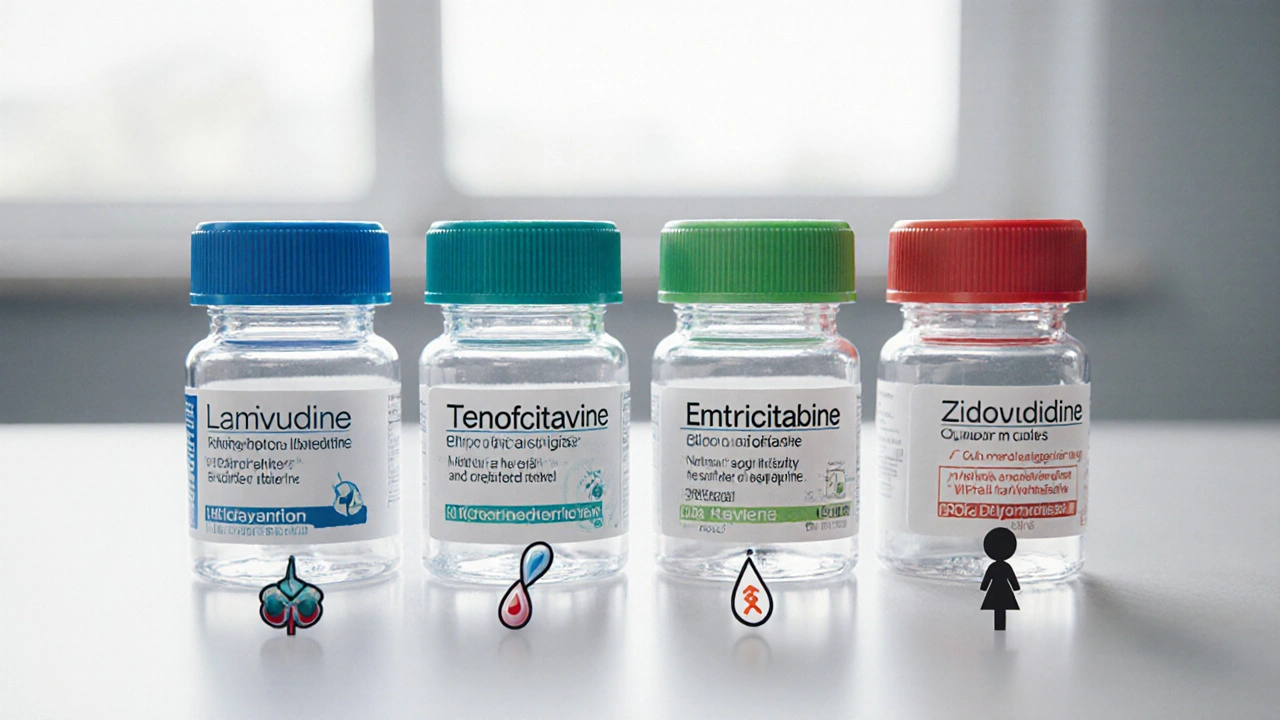HIV Medication: Essential Guide to Antiretroviral Therapy and More
When talking about HIV medication, any drug used to treat or prevent HIV infection, from classic antiretrovirals to newer long‑acting formulations. Also known as antiretroviral drugs, it is the backbone of modern HIV care. Antiretroviral therapy, the combination of several HIV medications taken together is the standard approach to keep the virus suppressed. Pre‑exposure prophylaxis (PrEP), a daily pill that uses specific HIV medication to stop infection before exposure, adds a prevention layer. Finally, Drug resistance, the virus’s ability to evade medication after mutations, shapes which drugs can be used.
Understanding how HIV medication works starts with the idea that effective treatment reduces the viral load in a person’s blood. Lower viral load means the immune system can recover, CD4 counts rise, and the risk of passing the virus to others drops dramatically. This simple relationship—HIV medication reduces viral load—creates the core of most treatment guidelines. It also sets the stage for why adherence matters: missing doses can let the virus rebound, giving it a chance to develop resistance. In practice, clinicians monitor viral load every few months to see if the chosen regimen is still doing its job.
Key Concepts You’ll Need
There are four main classes of HIV medication: nucleoside reverse transcriptase inhibitors (NRTIs), non‑nucleoside reverse transcriptase inhibitors (NNRTIs), protease inhibitors (PIs), and integrase strand transfer inhibitors (INSTIs). Each class attacks a different step in the virus’s replication cycle. For example, INSTIs block the virus from inserting its genetic material into host cells, making them a popular choice for first‑line therapy because they tend to have fewer side effects. Knowing which class you’re dealing with helps predict common side effects—like nausea with some NRTIs or cholesterol changes with certain PIs—and informs decisions about drug‑drug interactions.
Drug resistance isn’t just a lab term; it directly influences which combinations a doctor can prescribe. When a patient’s viral load stops falling, resistance testing identifies specific mutations. Those results tell the provider which drugs the virus can still be vulnerable to. This feedback loop—HIV medication influences viral load, viral load informs resistance testing, resistance testing guides medication choice—keeps treatment personalized and effective.
Pre‑exposure prophylaxis (PrEP) showcases how HIV medication can be used preventively. A daily pill, usually containing tenofovir and emtricitabine, builds sufficient drug levels in tissues to stop the virus before it can establish infection. People at high risk—such as those with an HIV‑positive partner or who have multiple sexual partners—benefit from PrEP because it gives them a safety net while they continue other prevention strategies like condoms.
Adherence tools are essential for making HIV medication work in real life. Fixed‑dose combos, once‑daily pills, and even long‑acting injectables released every two months reduce the chance of missed doses. Apps that send reminders, pill boxes that track usage, and counseling sessions all aim to keep patients on track. The simpler the regimen, the higher the adherence, and the better the viral suppression.
Side effects can be a roadblock, but most are manageable. Mild nausea often eases after a few weeks, while more serious issues like kidney toxicity or bone density loss require regular lab checks. Doctors usually start with a regimen that balances potency with tolerability, then adjust based on how the patient feels and what labs show. Open communication about side effects ensures that any problem gets addressed before it leads to non‑adherence.
Co‑infections such as hepatitis B or C change the calculus of HIV medication selection. Some NRTIs also treat hepatitis B, so a patient with both viruses might get a dual‑benefit regimen. Conversely, certain drugs can worsen liver disease, so clinicians have to weigh risks and benefits carefully. This interplay illustrates how HIV medication doesn’t exist in a vacuum; it interacts with the whole health picture.
Finally, the landscape of HIV medication keeps evolving. New long‑acting formulations, implantable devices, and novel drug classes are entering trials, promising fewer pills and longer protection intervals. Staying updated on these advances helps patients and providers pick the best tools for each situation. Below you’ll find a curated list of articles that dig deeper into each of these topics, from drug class overviews to practical tips for staying adherent.

